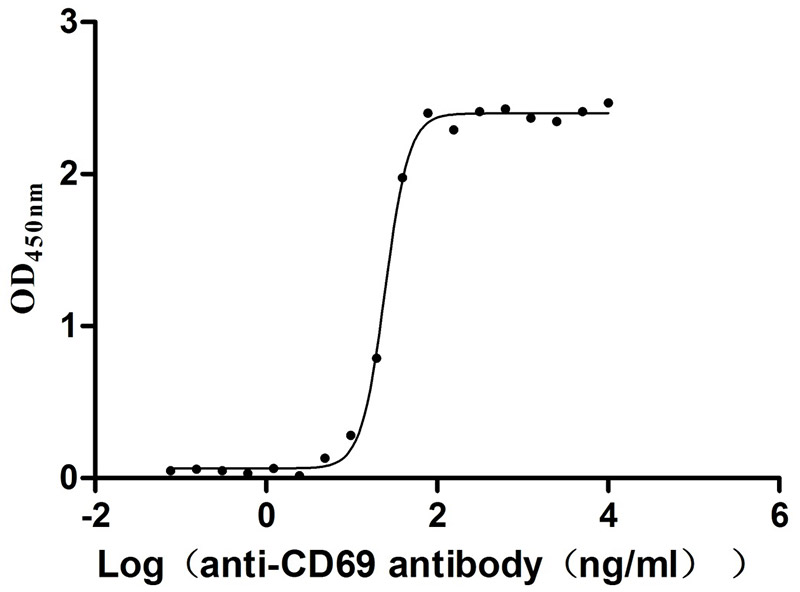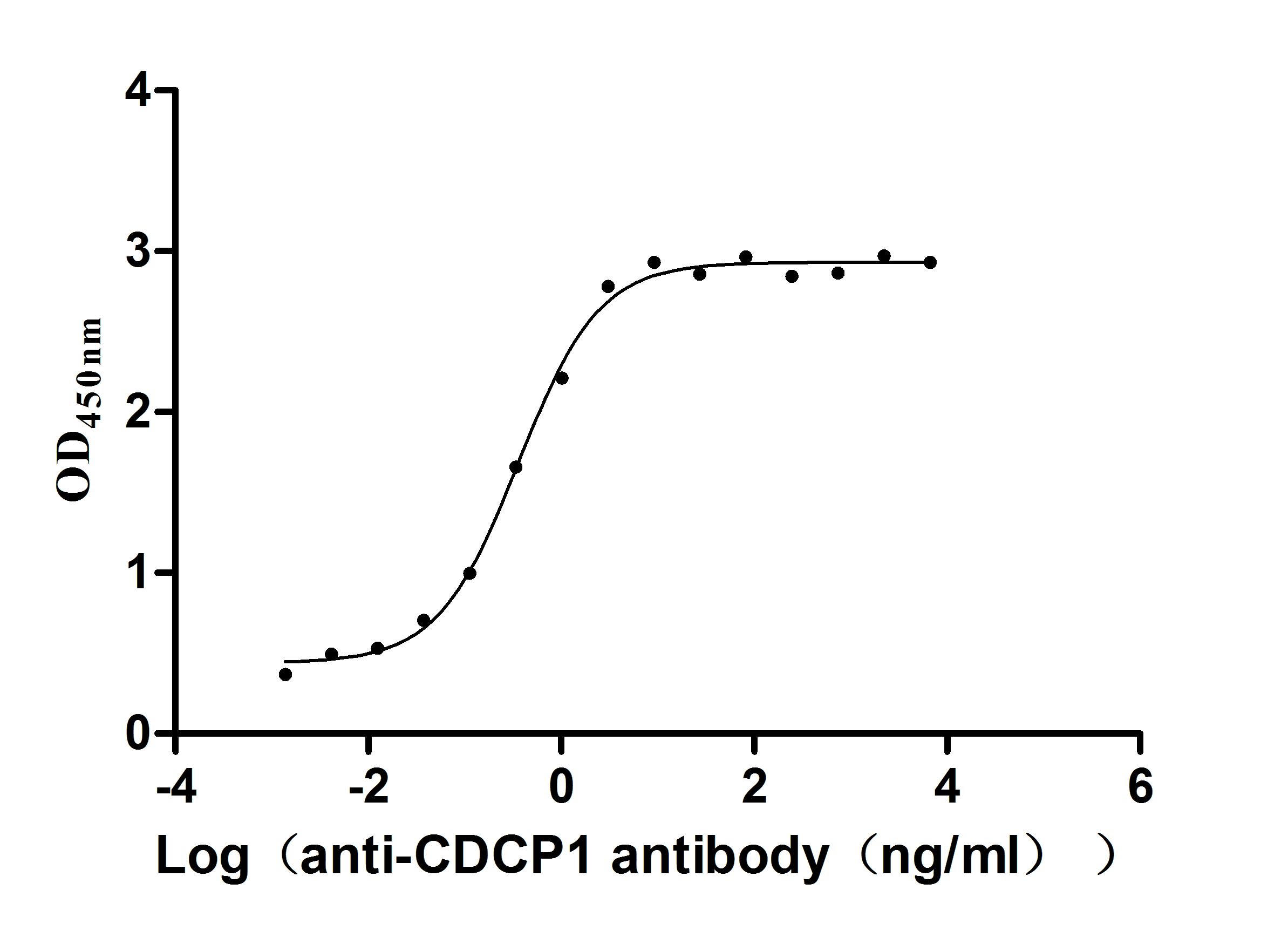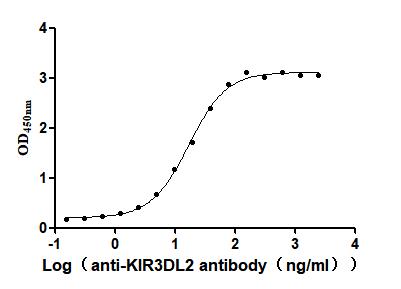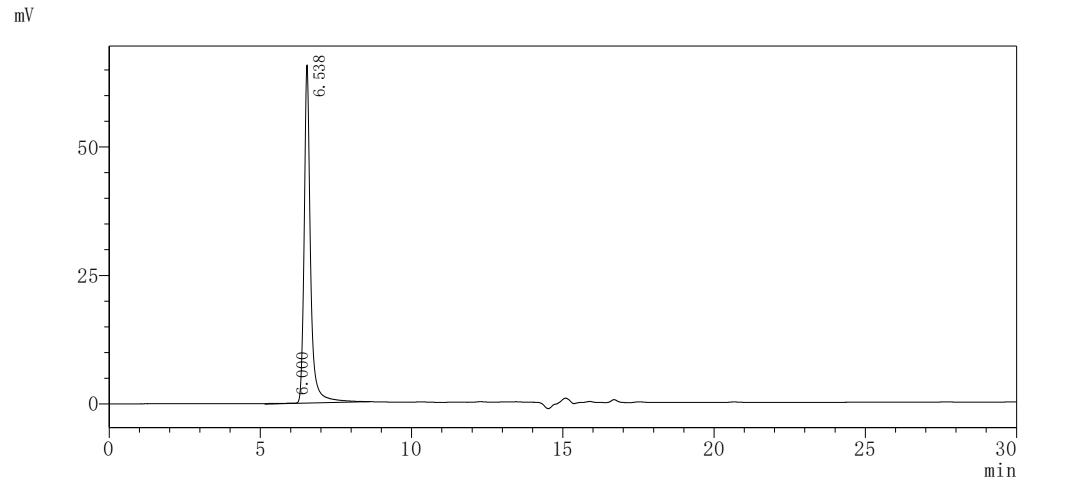Recombinant Mouse Receptor-type tyrosine-protein phosphatase delta (Ptprd), partial
-
中文名稱:小鼠Ptprd重組蛋白
-
貨號:CSB-EP727073MO-B
-
說明書:
-
規格:
-
來源:E.coli
-
共軛:Avi-tag Biotinylated
E. coli biotin ligase (BirA) is highly specific in covalently attaching biotin to the 15 amino acid AviTag peptide. This recombinant protein was biotinylated in vivo by AviTag-BirA technology, which method is BriA catalyzes amide linkage between the biotin and the specific lysine of the AviTag.
-
其他:
產品詳情
-
純度:>85% (SDS-PAGE)
-
基因名:
-
Uniprot No.:
-
別名:Ptprd; Receptor-type tyrosine-protein phosphatase delta; Protein-tyrosine phosphatase delta; R-PTP-delta; EC 3.1.3.48
-
種屬:Mus musculus (Mouse)
-
蛋白長度:Partial
-
蛋白標簽:Tag?type?will?be?determined?during?the?manufacturing?process.
The tag type will be determined during production process. If you have specified tag type, please tell us and we will develop the specified tag preferentially. -
產品提供形式:Lyophilized powder Warning: in_array() expects parameter 2 to be array, null given in /www/web/cusabio_cn/public_html/caches/caches_template/default/content/show_product_protein.php on line 662
Note: We will preferentially ship the format that we have in stock, however, if you have any special requirement for the format, please remark your requirement when placing the order, we will prepare according to your demand. -
復溶:We recommend that this vial be briefly centrifuged prior to opening to bring the contents to the bottom. Please reconstitute protein in deionized sterile water to a concentration of 0.1-1.0 mg/mL.We recommend to add 5-50% of glycerol (final concentration) and aliquot for long-term storage at -20℃/-80℃. Our default final concentration of glycerol is 50%. Customers could use it as reference.
-
儲存條件:Store at -20°C/-80°C upon receipt, aliquoting is necessary for mutiple use. Avoid repeated freeze-thaw cycles.
-
保質期:The shelf life is related to many factors, storage state, buffer ingredients, storage temperature and the stability of the protein itself.
Generally, the shelf life of liquid form is 6 months at -20°C/-80°C. The shelf life of lyophilized form is 12 months at -20°C/-80°C. -
貨期:Delivery time may differ from different purchasing way or location, please kindly consult your local distributors for specific delivery time.Note: All of our proteins are default shipped with normal blue ice packs, if you request to ship with dry ice, please communicate with us in advance and extra fees will be charged.
-
注意事項:Repeated freezing and thawing is not recommended. Store working aliquots at 4°C for up to one week.
-
Datasheet :Please contact us to get it.
問答及客戶評論
I'd like to know if this product is available. I would also like to confirm that the recombinant protein being expressed is the extracellular domain of PTPRD.
This protein is the Tyrosine-protein phosphatase 2 Domain of mouse PTPRD.
Recombinant Mouse Receptor-type tyrosine-protein phosphatase delta(Ptprd) ,partial
CSB-YP727073MO >> Yeast
CSB-EP727073MO >> E.coli
CSB-BP727073MO >> Baculovirus
CSB-MP727073MO >> Mammalian cell working days
Expression Region: 1644-1903aa; C-terminal fragment; Tyrosine-protein phosphatase 2 Domain
Tag Info: YP: N-terminal 6xHis-tag; EP, BP, MP: N-terminal 10xHis-tag and C-terminal Myc-tag
Target Protein Sequence:
MELEFKRLASSKAHTSRFISANLPCNKFKNRLVNIMPYESTRVCLQPIRGVEGSDYINASFLDGYRQQKAYIATQGPLAETTEDFWRMLWEHNSTIVVMLTKLREMGREKCHQYWPAERSARYQYFVVDPMAEYNMPQYILREFKVTDARDGQSRTVRQFQFTDWPEQGVPKSGEGFIDFIGQVHKTKEQFGQDGPISVHCSAGVGRTGVFITLSIVLERMRYEGVVDIFQTVKMLRTQRPAMVQTEDQYQFCYRAALEY
靶點詳情
-
功能:Can bidirectionally induce pre- and post-synaptic differentiation of neurons by mediating interaction with IL1RAP and IL1RAPL1 trans-synaptically. Involved in pre-synaptic differentiation through interaction with SLITRK2.
-
基因功能參考文獻:
- Chondroitin Sulfate Proteoglycans Negatively Modulate Spinal Cord Neural Precursor Cells by Signaling Through LAR and RPTPsigma and Modulation of the Rho/ROCK Pathway. PMID: 25703008
- Ptprd is a tumor suppressor that can promote tumorigenesis in concert with Cdkn2a loss. PMID: 25138050
- We reveal that PTPRD is a bona fide tumor suppressor, pinpoint PTPRD loss as a cause of aberrant STAT3 activation in gliomas, and establish PTPRD loss, in the setting of CDKN2A/p16(INK4A) deletion, as a driver of glioma progression. PMID: 24843164
- RPTP-sigma and RPTP-delta complement each other functionally during mammalian development, and reveal an essential contribution of RPTP-sigma and RPTP-delta to appropriate motoneuron axon targeting during mammalian axonogenesis. PMID: 16738228
- Receptor protein tyrosine phosphatase-delta cooperates with hedgehog-responsive gene MIM to induce cytoskeletal remodeling. PMID: 15684034
- PTPRD may be one of a select group of tumor suppressor genes that are inactivated in a wide range of common tumor types. PMID: 19074898
顯示更多
收起更多
-
亞細胞定位:Membrane; Single-pass type I membrane protein.
-
蛋白家族:Protein-tyrosine phosphatase family, Receptor class 2A subfamily
-
組織特異性:Brain, kidney, heart, and some B-cell lines.
-
數據庫鏈接:
Most popular with customers
-
Recombinant Human Pro-neuregulin-1, membrane-bound isoform (NRG1), partial (Active)
Express system: Mammalian cell
Species: Homo sapiens (Human)
-
Recombinant Human Prolactin receptor (PRLR), partial (Active)
Express system: Mammalian cell
Species: Homo sapiens (Human)
-
Recombinant Human Epithelial discoidin domain-containing receptor 1 (DDR1), partial (Active)
Express system: Mammalian cell
Species: Homo sapiens (Human)
-
Recombinant Human Claudin-6 (CLDN6)-VLPs, Fluorescent (Active)
Express system: Mammalian cell
Species: Homo sapiens (Human)
-
Recombinant Human Early activation antigen CD69 (CD69), partial (Active)
Express system: Mammalian cell
Species: Homo sapiens (Human)
-
Recombinant Human CUB domain-containing protein 1 (CDCP1), partial (Active)
Express system: Mammalian cell
Species: Homo sapiens (Human)
-
Recombinant Human Killer cell immunoglobulin-like receptor 3DL2 (KIR3DL2), partial (Active)
Express system: Mammalian cell
Species: Homo sapiens (Human)
-
Recombinant Human C-C chemokine receptor type 9 (CCR9)-VLPs (Active)
Express system: Mammalian cell
Species: Homo sapiens (Human)


-AC1.jpg)
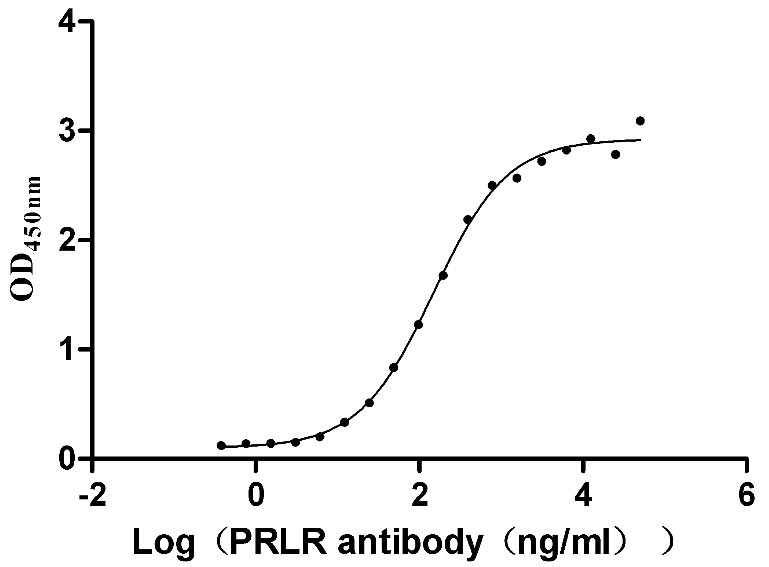
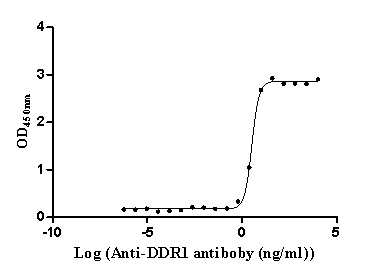
f4-AC1.jpg)
